By Aylah Clark, ND
Though the rates of cigarette smoking, alcohol abuse, and cocaine use have declined in recent years, addiction to these and other substances continue to be a serious problem.
Sometimes addiction can even start with a prescribed medication that may have been very beneficial to reduce symptoms and improve quality of life at the time. 2.5% of the population uses prescription drugs non-medically, such as pain killers, tranquilizers, and stimulants which can lead to a dependency and difficulty discontinuing. In an effort to end one addiction, people may jump to other substances in attempts to control cravings. What started as taking a prescription to control pain can end up in a cycle of dependency and drug use.
Nutrition is often not emphasized as a foundation of addiction treatment, but it should be seriously considered as a tool to provide comprehensive support and better recovery outcomes. There are many connections between substance abuse and nutrition, and if utilized correctly, diet can play a vital role supporting people in recovery.
One important connection is with sugar, which is often turned to in substance abuse because it stimulates the same reward pathways of the brain associated with addiction. Sugar can be addictive in its own right and is a common issue for many people, but is even more of a problem when substance abuse is also an issue. In some cases, controlling sugar addiction can help down-regulate the reward pathway that is driving other addictions.
Furthermore, substance abuse can cause nutrient deficiencies and correcting these deficiencies can help reduce cravings and improve symptoms of withdrawal in many cases. These nutrient deficiencies can happen for several reasons. Some substances like alcohol can impact gut health leading to malabsorption. People may also crave less nutrient-dense foods, have reduced appetite, or the calories from the substance (alcohol typically) may replace calories from foods. Lastly, certain substances can deplete nutrients or change the way they are used or metabolized.
Why Correcting Nutrient Deficiencies is Important
Low levels of certain nutrients can not only cause symptoms like fatigue and muscle pain that can exacerbate withdrawal symptoms, but it can also lead to more serious issues if deficiencies become severe enough or go on for a long time.
Some problems associated with nutrient deficiencies include low bone density (osteoporosis/osteopenia), heart beat abnormalities, and sub-optimal immune function for example, but even things like DNA repair and cellular function can be impacted. Correcting nutrient deficiencies may help ease withdrawal symptoms, reducing the risk of relapse and blunting the temptation of other drugs.
Substance abuse can also be associated with many metabolic conditions such as insulin resistance, hormonal imbalance, high blood pressure, and cardiovascular disease—all of which proper nutrition can positively impact.
Mood disorders such as anxiety and depression are also common with addiction and nutrition can play a role in treatment here as well. Food can have significant impacts on mental health largely due to influences on our intestinal health and microbiome. There is mounting research showing that our gut health, including the bacteria present, can influence our mental health through a brain-gut axis and that dietary changes can even be effective treatment for some mood disorders that are common in addiction.
Alcohol
It is common for alcoholics to have multiple nutritional deficiencies which can actually exacerbate the toxic effects of alcohol. This can happen because alcohol replaces other calories in the diet. Additionally, alcohol can both damage the GI tract resulting in poor absorption, and alter the metabolism of some nutrients.
The most common nutrient deficiencies related to alcohol consumption are B vitamins such as thiamine (B1), folic acid (B9), and pyridoxine (B6). These and other B vitamins are high in turkey, chicken, mushrooms, tuna, green peas, and red meat (grass-fed preferred).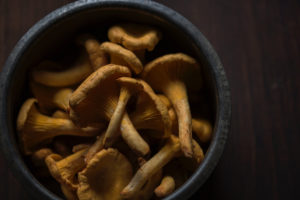
Your DNA
Risk for alcoholism is higher with family history because there is often a genetic component, however this doesn’t mean you can’t do anything about it. There is an interaction between genetics and lifestyle factors like diet and exercise, so lifestyle interventions including optimization of certain nutrients can change the way DNA is expressed. One potential candidate gene that appears to influence risk for alcoholism is COMT which is involved in the dopamine pathway and is influenced by certain vitamins such as B6 and magnesium. (1)
Magnesium
Magnesium, which is needed for about 300 different biochemical reactions in the body, can be low in alcoholics as well, and can further decline in alcohol withdrawal. (2) Consuming foods high in magnesium, or in some cases supplementing, can help correct these deficiencies. Foods high in magnesium include dark leafy greens, nuts, seeds, fish, beans, whole grains, and avocados.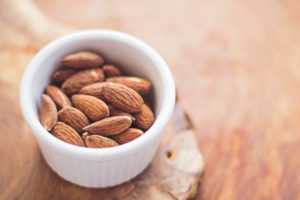
Reducing Cravings
There are a number of nutrients that studies show can decrease alcohol cravings. As one might expect, deficiencies in these nutrients can also result in increased cravings for alcohol. These include zinc, thiamine, B12, B6, magnesium, and glutamine. (3) This is in part due to their influence on the glutamatergic system in the brain. Typically, the dopaminergic system has been most associated with addiction, however glutamate also plays a central process on its own as well as through interactions with dopamine. (4) Zinc is found in spinach, flax seeds, pumpkin seeds, oysters, and beans. Glutamine is high in seafood, eggs, cabbage, nuts, beans, beets, spinach, and parsley.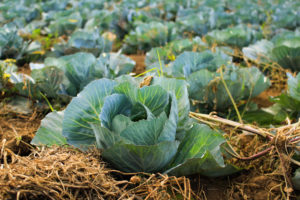
Glutamate-GABA Balance
In Alcohol Withdrawal Syndrome, which involves the acute signs and symptoms present in the 48 hour period following abrupt alcohol cessation, there are certain brain changes that take place. One of the primary changes is an increase in glutamate activity (excitatory, irritability) while GABA activity (inhibitory, calming) is reduced. Treatment is aimed at restoring this balance. (5) Certain nutrients can help support this balance as well such as vitamin B6, magnesium, NAC (an antioxidant), taurine (high in meat/fish), and green tea.
Blood Sugar
Reactive hypoglycemia is a common problem in alcoholism. Reactive hypoglycemia is when blood sugar drops, usually a few hours after a meal. It can result in anxiety and even if you’ve been abstaining from alcohol use, it can increase alcohol cravings. (6) Studies have shown that stabilizing blood sugar can increase the abstinence rate.(7)
Other studies have supported this showing that macronutrient ratios (fats, proteins, and carbohydrates) at meals and the resulting insulin response can influence nutrient and amino acid uptake in the brain. The inclusion of nutritional counseling in therapy with a focus on managing blood sugar resulted in reduced sugar intake, fewer alcohol cravings, and more success abstaining from alcohol. (8)
Opioids
Opioids include pain killers such as morphine and codeine, as well as synthetic opiates like oxycontin. One of the primary ways opioids work is by imitating our own natural opioids (like endorphins) causing an increase in the neurotransmitter dopamine. Because opioids cause a physiological dependency, and it can take months to years to regain normal functioning in these pathways, recovering from opioid addiction is incredibly challenging.
The stress of addiction and withdrawal on the body and the symptoms associated with it (extreme fatigue, depression, increased sensitivity to pain) often lead to poor diet choices as people subconsciously attempt to trigger the reward pathway with things like sugar. (9)
Reports have shown that poor diets, obesity, and nutritional deficiencies are common among people suffering from opioid addiction. These include low levels of protein and fat, impaired carbohydrate metabolism, as well as deficiencies in key vitamins and minerals. Due to changes in absorption and metabolism of nutrients people recovering from opioid addiction may need to consume even more protein and nutrient-dense foods than the general population, though the opposite is usually what happens.
Sugar
Sugar is a recurrent topic when it comes to addiction. When it comes to opioids sugar is important to address because people who have an addiction to opioids often have a diet very high in refined sugar for reasons discussed above. In one study, consumption of sucrose (a type of sugar) was twice as high in those with opioid addiction as controls. Many people with opioid dependence also report intense sugar cravings. (10) Studies have shown that sugar is not only addictive in its own right but also contributes to the biochemical state leading to and perpetuating opioid dependence. Elimination of sugar may also therefore help addicts discontinue opioids by disrupting the reinforcement of this reward pathway.
Vitamin C
Vitamin C deficiency is found in about 58% of people with opioid addiction. (11) Studies in which people addicted to opioids are given high doses of vitamin C show a decrease in withdrawal symptoms like fatigue, muscle pain, cold extremities, and constipation compared to controls. In one such study, the patients given vitamin C had far fewer major withdrawal symptoms (10-16.6% compared to 56.6%) with more falling in the mild withdrawal symptom range (46.6-50% compared to 6.6% of the non-vitamin C group). (12) (13)
The reason for such an improvement in withdrawal symptoms may be due to effects that vitamin C has on the dopaminergic and glutamatergic pathways. This was shown in a study on rats where the vitamin C inhibited the development of tolerance and dependence to opiates. (14)
Even without the high doses, consuming plenty of vitamin C from food sources is important and can help correct a deficiency. Foods high in vitamin C include citrus fruits, red peppers, kale, Brussels sprouts, broccoli, and strawberries.
Antioxidants
Opioid withdrawal has also been associated with reduced antioxidant defenses and a reduction in withdrawal symptoms may be associated with improved ability to repair oxidative damage. (15) Oxidative damage (or oxidative stress) is caused by substances called free radicals. The body combats this with antioxidant compounds that scavenge free radicals. Many antioxidants are found in plants such as polyphenols, vitamin E, and vitamin C.
Other Nutrients
Calcium and magnesium are often deficient in opioid addiction due to low intake of calcium and a common cause of neuromuscular conditions. (16) Calcium is high in spinach, kale, okra, collards, white beans, salmon, and trout. Iron is also a relatively common deficiency with opioid abuse and is highest in red meat, poultry, seafood, beans, dark leafy greens, and peas.
Cocaine
L-tyrosine & Neurotransmitter Balance
Chronic cocaine use can deplete the neurotransmitters dopamine and norepinephrine (which are elevated in acute cocaine use). Discontinuation of cocaine can cause even further depletion of these neurotransmitters. L-tyrosine is a precursor to dopamine and norepinephrine and could help decrease withdrawal symptoms. (17) L-tyrosine is found in beef, lamb, fish, chicken, nuts, seeds, eggs, beans, and whole grains.
Magnesium
Magnesium may also become deficient with cocaine use, which has been shown in rat studies. When given magnesium, rats decreased cocaine self-administration, and in humans it also decreased cocaine cravings. (18) (19) Magnesium is high in dark leafy greens, nuts, seeds, fish, beans, whole grains, and avocados.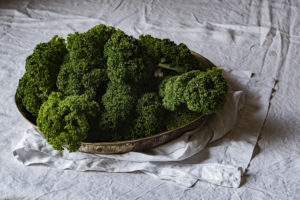
N-Acetylcysteine (NAC)
In a similar study to the one on magnesium, the antioxidant NAC was shown to reduce cocaine-seeking behavior in cocaine-addicted rats and shows promise as a therapy for reducing relapse rates. This is at least in part due to improvement in glutamatergic tone. (20)
Polyunsaturated Fats
Polyunsaturated fats (PUFAs) like omega-3s found in fish play a role in mood disorders and addiction due to their influence on the dopaminergic and serotonergic pathways. In one study, 32 patients who were in rehabilitation for cocaine use were assessed for PUFA status. Those who relapsed sooner (at the 3 month mark) had lower omega-6s and omega-3s. This trend continued with lower PUFA status predicting earlier relapse rates. (21)
Omega-3 fatty acids tend to be low in people addicted to cocaine in general, so optimizing PUFA levels may reduce vulnerability to relapse. Omega-3s are also important for heart and brain health, hormone production, and modulating inflammation and can be found in foods such as wild-caught fish, walnuts, chia seeds, and flaxseeds.
Cigarettes (Tobacco)
Cigarette smoking increases your risk of a number of conditions and, though cigarette smoking is on the decline, it causes 480,000 deaths each year. That is more than HIV, illegal drug use, alcohol use, motor vehicle injuries, and firearm-related incidents combined. (22). It’s hard to begin listing the other problems cigarette smoking causes, but aside from increasing the risk of many different cancers, it also increases the risk and worsens outcomes for cardiovascular disease such as stroke, aortic rupture, hardening of the arteries, as well as hip fracture, reduced fertility, chronic lung disease, blindness, pneumonia, and more.
Impacts of Cigarette Smoking on Nutrition
Some of the health impacts of smoking may be partially attributed to the effects on nutrient status in the body and the oxidative damage caused by the chemicals in cigarettes. Smoking lowers vitamin C, beta-carotene, and vitamin E which are all important antioxidant defenses in the body. Cadmium is found commonly in cigarettes and is known to antagonize zinc and reduce bioavailability of selenium. Both zinc and selenium are involved in the antioxidant process. (23) By correcting these deficiencies and improving diet, some of the damage caused by cigarettes, particularly on the cardiovascular system may be ameliorated somewhat, though certainly the real solution would be to quit smoking.
Other nutrition-related effects of smoking include insulin resistance leading to central obesity and increased risk of diabetes, (24), folate and other B vitamin deficiency (25), as well as other micronutrient deficiencies.
Using Nutrition to Aid Smoking Cessation
Studies on how nutrition can help people quit smoking are limited however there are some interesting studies.
One study looked at the impacts of a raw food diet on smoking habits. The patients were all smokers and some also drank alcohol. They increased raw food intake to 40% of their diet. Over a period of about 7 months 80% spontaneously abstained from smoking and/or alcohol use. This doesn’t prove that eating raw foods helps people stop smoking, but perhaps making some positive lifestyle changes can improve the chances of making additional changes later, like smoking cessation. (26)
Another study suggested that a high carbohydrate diet and L-tryptophan helped reduce withdrawal symptoms. (27) The idea behind this is that L-tryptophan is a precursor to the neurotransmitter serotonin and the higher carbohydrate diet enhances its uptake to the brain. Low serotonin is associated with increased cravings, depression, and anxiety. L-tryptophan is found in eggs, pineapples, salmon, nuts, seeds, and of course turkey.
When quitting smoking, some individuals fear that they will gain weight. Body positivity and nutritional counseling to help curb cravings and to provide the tools to make good dietary decisions under stress are important to include in any cessation program.
Sugar & Food Addiction
Food addiction seems to be incredibly common, though studies on epidemiology are sparse. I see it every day, particularly with sugar, but also wtih foods like salt and other additives that make food “hyperpalatable.” (28) There are many similarities between the neurochemical changes that occur with substance abuse and those with food addiction, particularly with the dopamine pathway, but there are other relationships as well. For example, even some appetite regulating signalers like leptin and ghrelin can trigger alcohol cravings. (29)
In some cases food addiction may not even really look like an addiction. For example, if people are used to eating chips, fast food, soda, etc., and are averse to things like fruits and vegetables, it is likely because the fruit and vegetables do not stimulate the dopamine reward pathway the way sugar, salt, or fried foods can.
It is very common for people who struggle with substance abuse to look to foods and other things that give you a rush, like caffeine, nicotine, or sugar. Stress also causes you to crave carbohydrates or sugars and often negatively influences food choices.
Sugar reduction can benefit everyone and as was previously mentioned, cutting sugar addiction may actually help reduce cravings for other addictive substances by lessening the reinforcement of the dopamine-reward pathway.
Big Picture
Look at food as a way of nourishing your body. Ask yourself if what you’re eating is supporting your body or detrimental. In some cases you can target foods to specifically support your body in recovery from addiction, but in general, eating healthy fats and protein, and eating a wide variety of colorful fruits and vegetables daily helps insure you are getting many different vitamins, minerals, and diverse phytonutrients that have a variety of benefits from vascular health, decreasing inflammation, to even changing the way your DNA is expressed.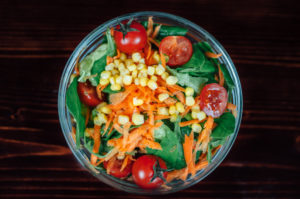
There are many other things you can do to support yourself in recovery that I did not discuss like exercise and stress-reduction techniques like meditation, yoga, breathing exercises, cognitive behavioral therapy, and much more. There are also many resources available such as the following:
National & Local Resources:
Find a rehabilitation center at Recovery.org
Substance Abuse and National Health Services Administration – Help Hotline and Resource Locator
Alcoholics Anonymous and Substance Abuse Support Meeting Finder (Addiction Recovery Guide)
Hartford Healthcare – Rushford
CT Community for Addiction Recovery
Works Cited
- Candidate genes for alcohol dependence: a genetic association study from India. Malhotra, S, et al. 5, 2016, Indian J Med Res, Vol. 144, pp. 689-696.
- Relationship of free fatty acids and magnesium in ethanol withdrawal in dogs. Flink, EB, Shane, SR and Scobbo, RR. 1979, Metabolism, Vol. 28, pp. 858-868.
- Influence of microelement concentration on the intensity of alcohol withdrawal syndrome. Prior, PL, et al. 2, 2015, Alcohol Alcohol, Vol. 50, pp. 152-6.
- Glutamatergic mechanisms in addiction. Tzschentke, TM and Schmidt, WJ. 4, 2003, Mol Psychiatry, Vol. 8, pp. 373-82.
- Binge ethanol withdrawal: effects on post-withdrawal ethanol intake, glutamate-glutamine cycle and monoamine tissue content in P rat model. Das, SC, et al. 2016, Behav Brain Res, Vol. 303, pp. 120-125.
- New alcoholism Rx: hold the coffee and give vitamins. 28, 1979, Med Tribune, Vol. 20, pp. 3, 29.
- Genetotrophic diseases; alcoholism. Williams, RJ, Berry, LJ and Beerstecher, E Jr. 1950, Tex Rep Biol Med, Vol. 18, pp. 238-256.
- Alcohol craving in rehabilitation: assessment of nutrition therapy. Biery, JR, Williford, JH Jr. and McMullen, EA. 4, 1991, J Am Diet Associ, Vol. 91, pp. 463-6.
- Burden and nutritional deficiencies in opiate addiction – systematic review article. Nabipour, Sepideh, Ayu Said, Mas and Hussain Habil, Mohd. 8, 2014, Iran J Public Health, Vol. 43, pp. 1022-1032.
- Diet and opiate addiction: a quantitative assessment of theh diet of non-institutionalized opiate addicts. Morabia, A, Fabre, J and Chee, E. 1989, Br J Addict, Vol. 84, pp. 173-180.
- Ascorbic acid status of the drug addict patient. Croft, LK, Davis, RK and Rose, ME. 1973, Am J Clin Nutr, Vol. 26, p. 1042.
- The hypoascorbemia-kwashiorkor approach to drug addiction therapy: a pilot study. Libby, AF and Stone, I. 1977, J Orthomolec Psychiatry, Vol. 6, pp. 300-308.
- Ascorbic acid (vitamin C) effects on withdrawal syndrome of heroin abusers. Evangelou, A, et al. 2, 2000, In Vivo, Vol. 14, pp. 363-6.
- Ascorbic acid inhibits developement of tolerance and dependence to opiates in mice: possible glutamatergic or dopaminergic modulation. Kulkarni, SK, Deshpande, C and Dhir, A. 1, 2008, Indian J Pharm Sci, Vol. 70, pp. 56-60.
- Opioid use affects antioxidant activity and purine metabolism: preliminary results. Mannelli, P, et al. 8, 2009, Hum Psychopharmacol, Vol. 24, pp. 666-675.
- Finnegan, J and Gray, D. Recovery from Addiction, 1st edition. Berkeley, California : s.n., 1995.
- Tyrosine helps in withdrawal from cocaine. Hixson, JR. December 28, 1983, Med Tribune, p. 15.
- Cocaine induces intracellular free Mg deficits, ischemia and stroke as observed by in-vivo 31P-NMR of the brain. Altura, BM and Gupta, RK. 1992, Biochim Biophys Acta, Vol. 1111, pp. 271-274.
- A preliminary, controlled investigation of magnesium L-aspartate hydrochloride for illicit cocaine and opiate use in methadone-maintained patients. Margolin, A, et al. 2003, J Addict Dis, Vol. 22, pp. 49-61.
- Chronic N-acetylcysteine during abstinence or extinction after cocaine self-administration produces enduring reductions in drug seeking. Reichel, CM, et al. 2, 2011, J Pharmacol Exp Ther, Vol. 337, pp. 487-493.
- Polyunsaturated fatty acid status and relapse vulnerability in cocaine addicts. Buydens-Branchey, L, et al. 1, 2003, Psychiatry Res, Vol. 120, pp. 29-35.
- Centers for Disease Control and Prevention. Health Effects of Cigarette Smoking. CDC Data and Statistics. [Online] April 20, 2017. https://www.cdc.gov/tobacco/data_statistics/fact_sheets/health_effects/effects_cig_smoking/.
- Cigarette smoking-nutritional implications. Preston, AM. 4, 1991, Prog Food Nutr Sci, Vol. 15, pp. 183-217.
- Consequences of smoking for body weight, body fat distribution, and insulin resistance. Chiolero, A, et al. 4, 2008, Amer J of Clin Nutr, Vol. 87, pp. 801-809.
- Chronic cigarette smoking is associated with diminished folate status, altered folate form distribution, and increased genetic damage in the buccal mucosa of healthy adults. Gabriel, H and al, et. 4, 2006, Amer J Clin Nutr, Vol. 84, pp. 835-841.
- Effects of a raw food diet on hypertension and obesity. Douglass, JM, Rasgon, IM and Fleiss, PM. 1985, South Med J, Vol. 78, pp. 841-844.
- TRyptophan and high-carbohydrate diets as adjuncts to smoking cessation therapy. Bowen, DJ, Spring, B and Fox, E. 1991, J Behav Med, Vol. 14, pp. 97-110.
- How prevalent is “food addiction”? Meule, Adrian. 61, s.l. : Front Psychiatry, 2011, Vol. 2.
- Role of ghrelin system in alcoholism: actingo on the growth hormone secretagogue receptor to treat alcohol-related diseases. Leggio, L. s.l. : Drug News Perspect, 2010, Vol. 23, p. 157.
- Failure of magnesium to maintain self-administration in cocaine-naive rats. Kantak, KM, Bourg, JF and Lawley, SI.
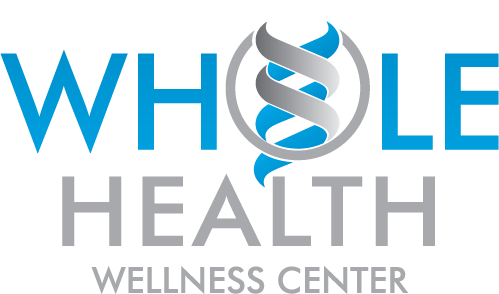
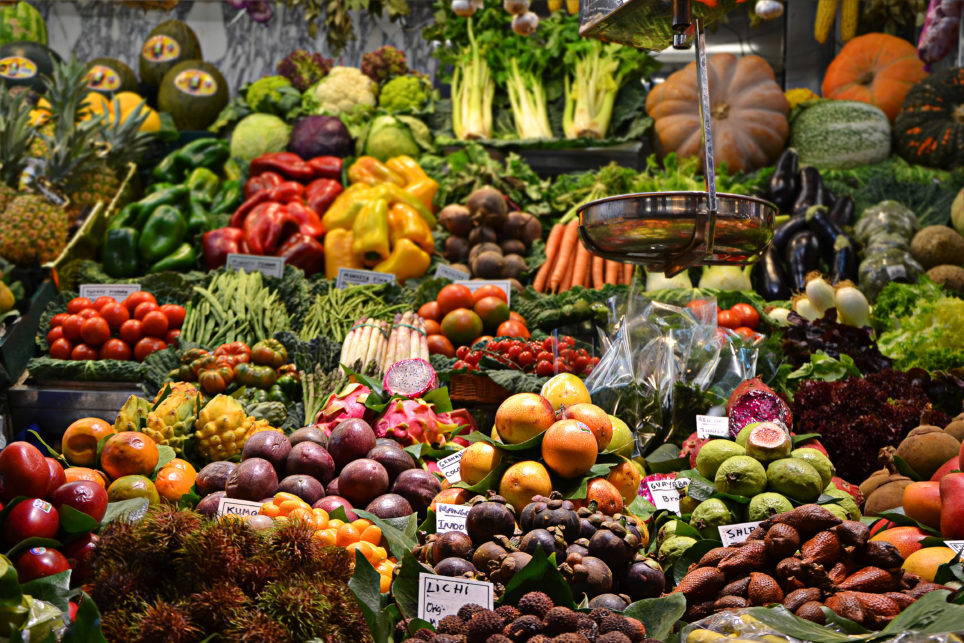
One Comment on “How to Use Nutrition to Help Combat Addiction”
Pingback: Opioid Addiction Treatment and Nutrition - Addiction Medicine Care (AMC)